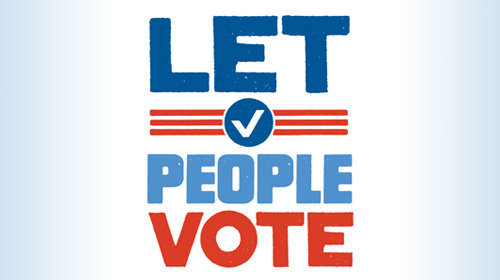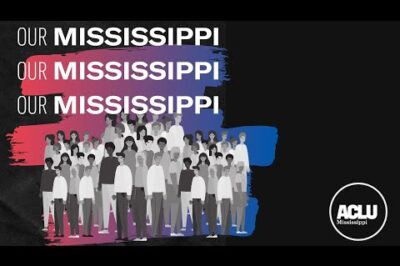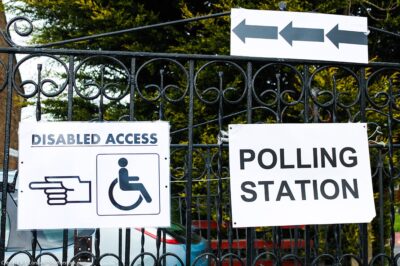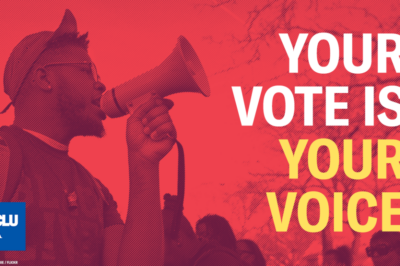
While the 15th Amendment was adopted in 1870 and prohibited denial of the right to vote on account of race or color, in reality, many African-Americans were only able to vote within recent memory — less than 50 years ago, with the passage of the Voting Rights Act of 1965. Many people fought and bled for that right. Yet, despite a victory so recent in our memories, last week, the Supreme Court undermined one of the most powerful tools forged during that struggle—Section 5 of the Voting Rights Act (VRA).
Section 5 required nine states and portions of seven others to get approval from the Department of Justice or the federal court in the District of Columbia before they can implement any voting changes, because of those jurisdictions’ past history and ongoing incidents of discrimination against racial and language minorities.
The ACLU represented the Alabama State NAACP and impacted voters in Shelby County v. Holder, defending the constitutionality of Section 5 of the Voting Rights Act. Alabama challenged Section 4 (the Section 5 coverage formula) and Section 5 as facially unconstitutional, meaning there are no circumstances under which Sections 4 and 5 could be valid. While the Court did not strike down Section 5 as unconstitutional, it did say that current geographic reach of the VRA under Section 4 was impermissible. Civil rights icon Representative John Lewis rightly commented that the Supreme Court’s decision “put a dagger in the heart of the Voting Rights Act.”
The Court’s opinion relies on a belief that the VRA uses an outdated formula to decide which states are covered by Section 5. In doing so, the Court acknowledged that voting discrimination exists, yet it took away one of the most successful, and still needed, tools that has been so effective in combatting it. As Justice Ginsburg wrote in her dissent, “Hubris is a fit word for today’s demolition of the VRA.” She noted that “[t]hrowing out preclearance when it has worked and is continuing to work to stop discriminatory changes is like throwing away your umbrella in a rainstorm because you are not getting wet.” The Voting Rights Act has proven again and again to be the best defender of justice in voting. Its job is not finished.
In 2006, Congress developed an extensive record, showing that Section 5, and the coverage formula on which it depends, is still needed. Congress amassed over 15,000 pages, heard from over 90 witnesses, held over a dozen hearings, and voted nearly unanimously to extend Section 5. What makes the Supreme Court’s decision so shocking is that in addition to this record, Congress acts at the height of its authority when it enforces the Fourteenth and Fifteenth Amendments to root out invidious discrimination. The decision is an attack on Congress’ constitutional authority to protect voters from racial discrimination.
Section 5 was designed to check certain states’ attempts to circumvent the protections of the 14th and 15th Amendments by replacing one unconstitutional voting practice with another. Leading up to the passage of the VRA, many states, largely former slave states, used an array of tactics, from white-only primaries, to literacy tests, to poll taxes, to violence and intimidation, to suppress minority voters. As one method was deemed unconstitutional, another method took its place. And new tactics have developed overtime – documentary proof of citizenship requirements, voter ID, last minute polling place changes, limitations on third party voter registration activities and reducing the days for early voting – have all worked to disfranchise voters.
Before the Supreme Court struck down Section 4, Section 5 was still actively combatting barriers which, though subtler than a white-only primary, were just as discriminatory. In 2001 in Kilmichael, Mississippi, for example, a significant number of African American candidates qualified for the board and mayoral races for the first time in its history. In response, the city promptly cancelled the general election entirely. Sadly, the list of similar discriminatory schemes is long, sordid, and shamefully current. Congress recognized hundreds of similar instances when it reauthorized the VRA in 2006.
Just as Section 5 has given tangible protections to millions of voters since 1965, its absence will leave the door open for discrimination. Just hours after the Court released its decision in Shelby, Texas announced that it would implement its voter ID law that had been blocked under Section 5 because of its discriminatory impact. More changes that negatively impact voters of color, from changes in polling locations to changes in redistricting, are sure to come if Congress does not act to repair the damage and restore the legislation they passed on an overwhelming bipartisan basis, just seven years ago.
As House Speaker John Boehner said in 2006, the Voting Rights Act is “an effective tool in protecting a right that is fundamental to our democracy.” Now we must work together again to restore the critical protections of the act by designing a new formula that will cover jurisdictions with recent and egregious voting records. Courts and communities must have the ability to stop discriminatory changes before they harm voters. Now is the time for us to work with Congress to repair the damage done by the Court and put the heart back into the Voting Rights Act.
Learn more about the Voting Rights Act and other civil liberty issues: Sign up for breaking news alerts, follow us on Twitter, and like us on Facebook.




